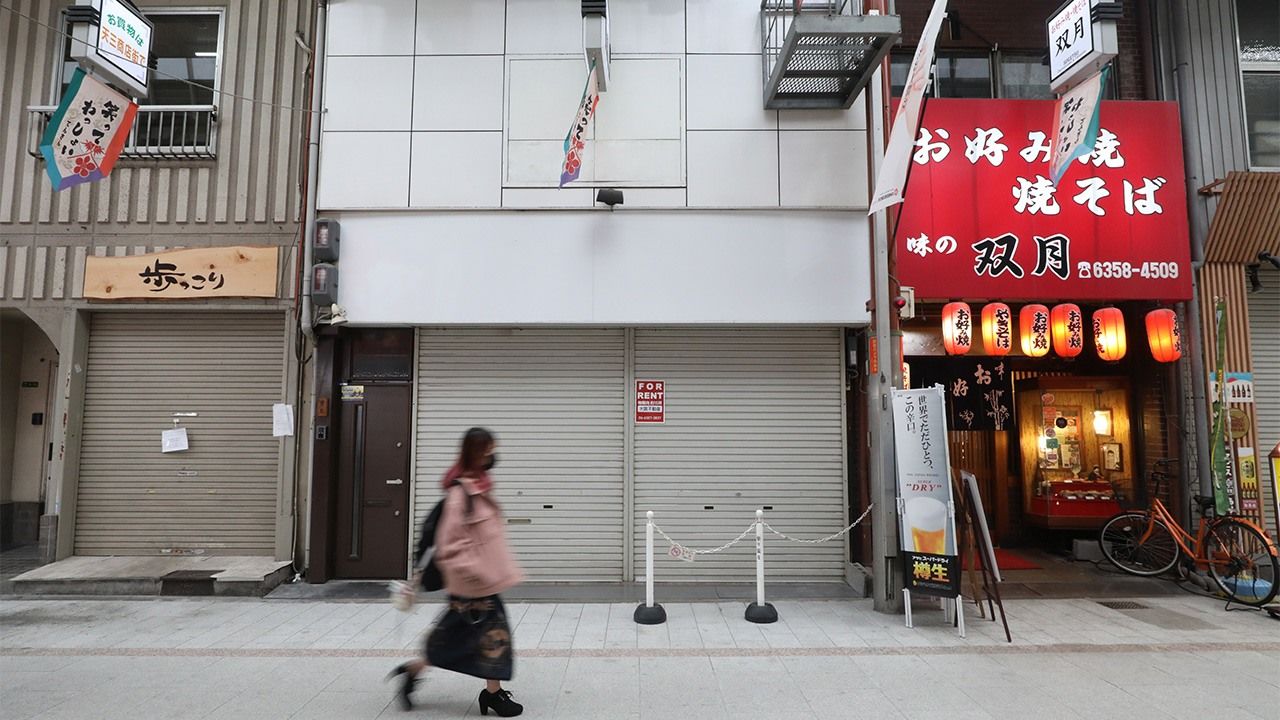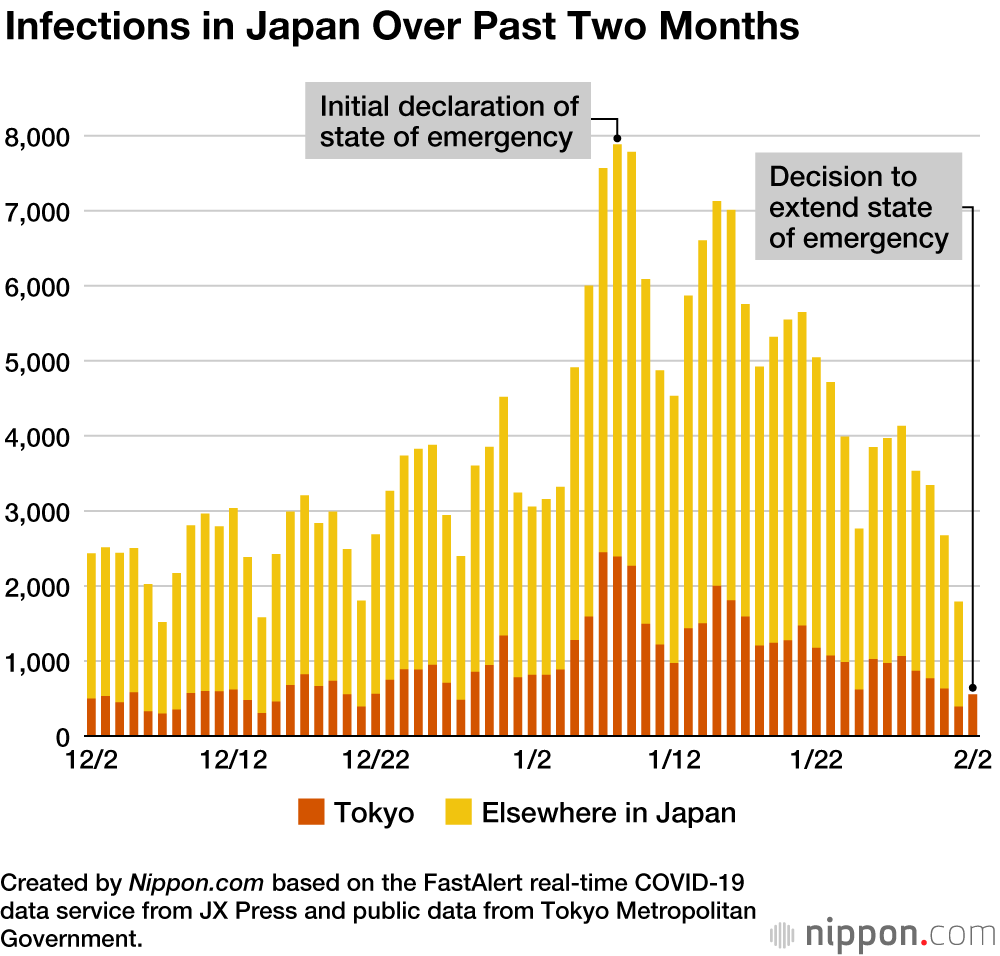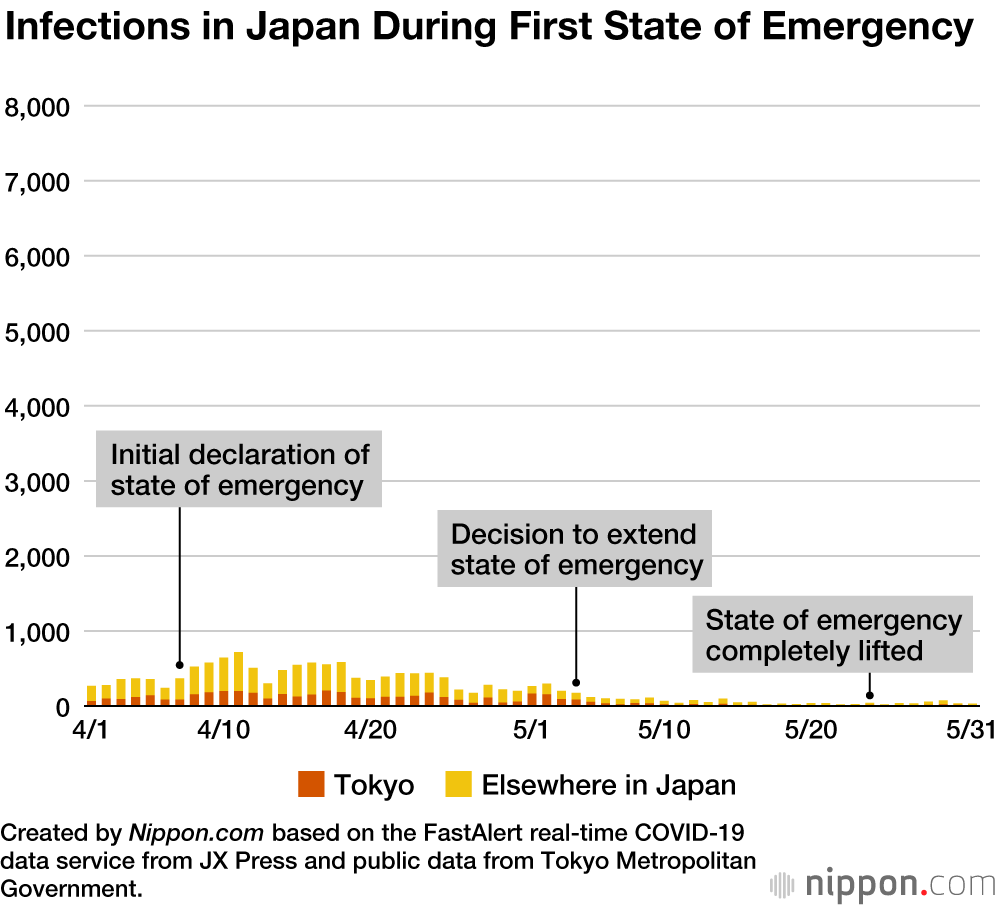
Japan’s Second State of Emergency Extended to Run Until March 7
Politics Society Health- English
- 日本語
- 简体字
- 繁體字
- Français
- Español
- العربية
- Русский
On February 2, the Japanese government decided to extend the COVID-19 state of emergency in 10 of the 11 prefectures where it is ongoing (excluding Tochigi) for one month until March 7. Bars and restaurants will continue to be asked to operate with shortened opening hours, and requests to implement working from home also remain unchanged. In prefectures where the situation improves, the state of emergency may be lifted early.
The number of infections peaked on January 8, when the state of emergency was announced, and has shown a steady downward trend since. However, this figure is still high compared with those of the first state of emergency from April to May 2020.
On February 3, there were 120 fatalities, the highest total to date, and there were still 897 severe cases, so medical services remain under serious pressure.
The 10 prefectures continuing under a state of emergency are Tokyo, Kanagawa, Saitama, Chiba, Osaka, Kyoto, Hyōgo, Aichi, Gifu, and Fukuoka.
Japan’s Second State of Emergency: A Timeline
| January 7 | The government decides to declare a state of emergency on January 8 in Tokyo, Kanagawa, Saitama, and Chiba Prefectures. |
| January 8 | The number of new daily cases nationwide reaches a record high of 7,882. The total number of cases in Tokyo tops 70,000. |
| January 9 | The governors of Osaka, Kyoto, and Hyōgo call for their prefectures to be included in the state of emergency. |
| January 13 | The government adds the prefectures of Osaka, Kyoto, Hyōgo, Aichi, Gifu, Fukuoka, and Tochigi to the state of emergency from January 14 until February 7. |
| January 14 | The total number of cases in Tokyo tops 80,000. |
| January 18 | The Ministry of Health announces that three people in Shizuoka Prefecture tested positive for the same COVID-19 variant that is spreading in Britain, despite not traveling abroad themselves or having contact with such travelers. Prime Minister Suga Yoshihide announces that Minister for Administrative Reform Kōno Tarō will take responsibility for Japan’s vaccination program. |
| January 20 | Railway operators in the Tokyo area move up their last trains by up to 30 minutes for the duration of the state of emergency. |
| January 21 | The total number of cases in Tokyo tops 90,000. |
| January 23 | The total number of fatalities nationwide tops 5,000. |
| January 27 | The number of severe cases reaches a record high of 1,043. |
| January 29 | Liberal Democratic Party politician Matsumoto Jun resigns from his post as acting chairman of the National Public Safety Commission, and Tōyama Kiyohiko of junior coalition partner Kōmeitō resigns as the party’s deputy secretary general, after news emerges of visits to Ginza nightclubs during the state of emergency. |
| February 1 | Tōyama Kiyohiko of Kōmeitō resigns as a lawmaker and Matsumoto Jun and two other LDP lawmakers quit the party to take responsibility for Ginza nightclub visits. The total number of cases in Tokyo tops 100,000. |
| February 2 | The government decides to extend the state of emergency in 10 of the 11 prefectures where it is ongoing (excluding Tochigi) for one month until March 7. |
| February 3 | The daily total of fatalities nationwide reaches a record high of 120. |
(Originally published in Japanese. Banner photo: A property in Kita Ward, Osaka, with a “for rent” sign after the announcement of the state of emergency. © Jiji.)

